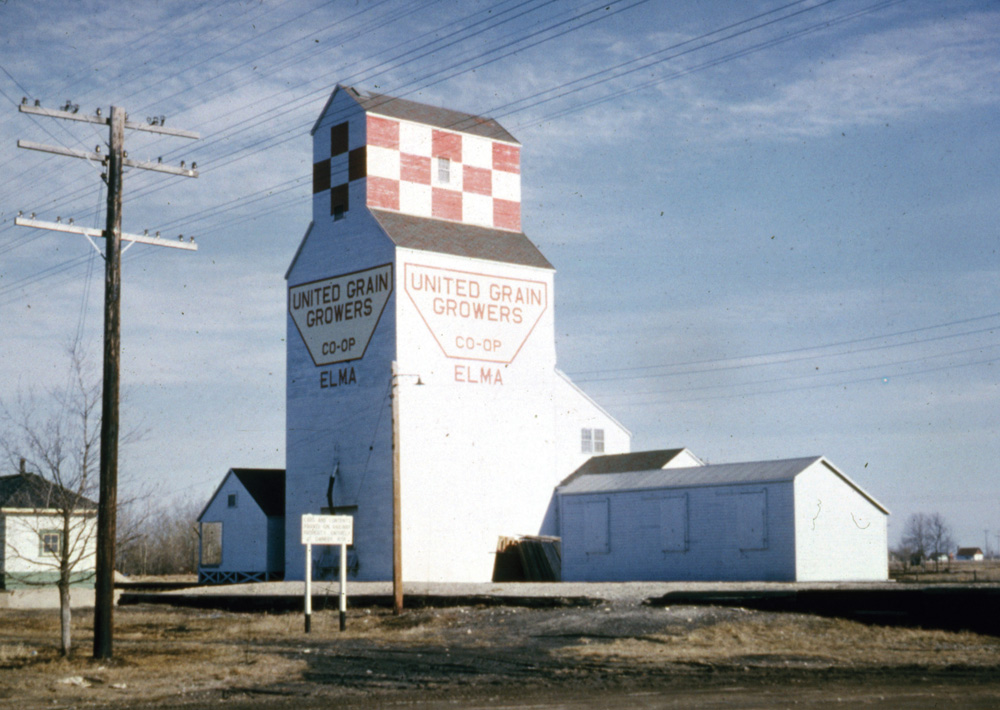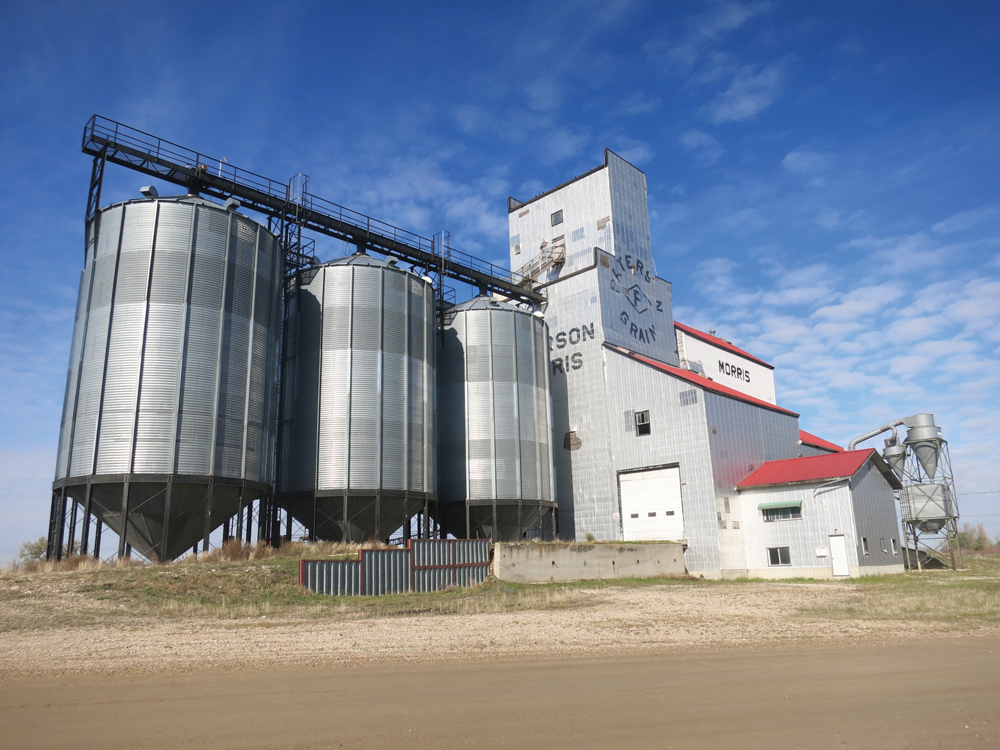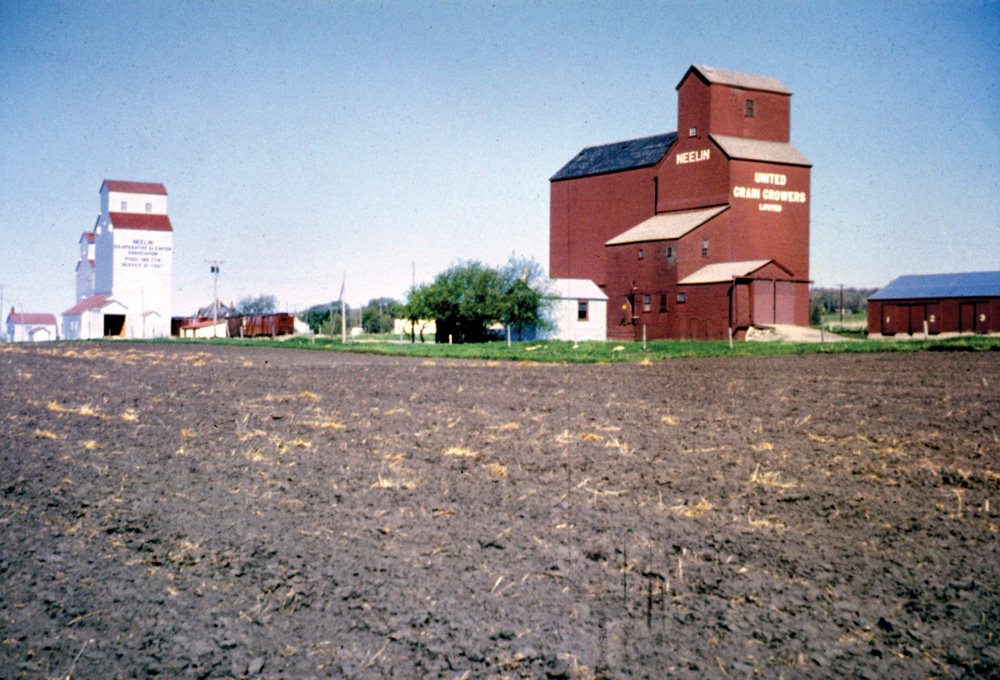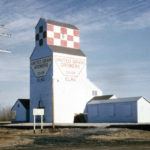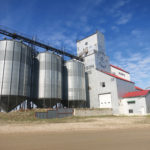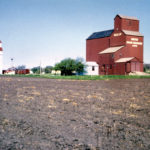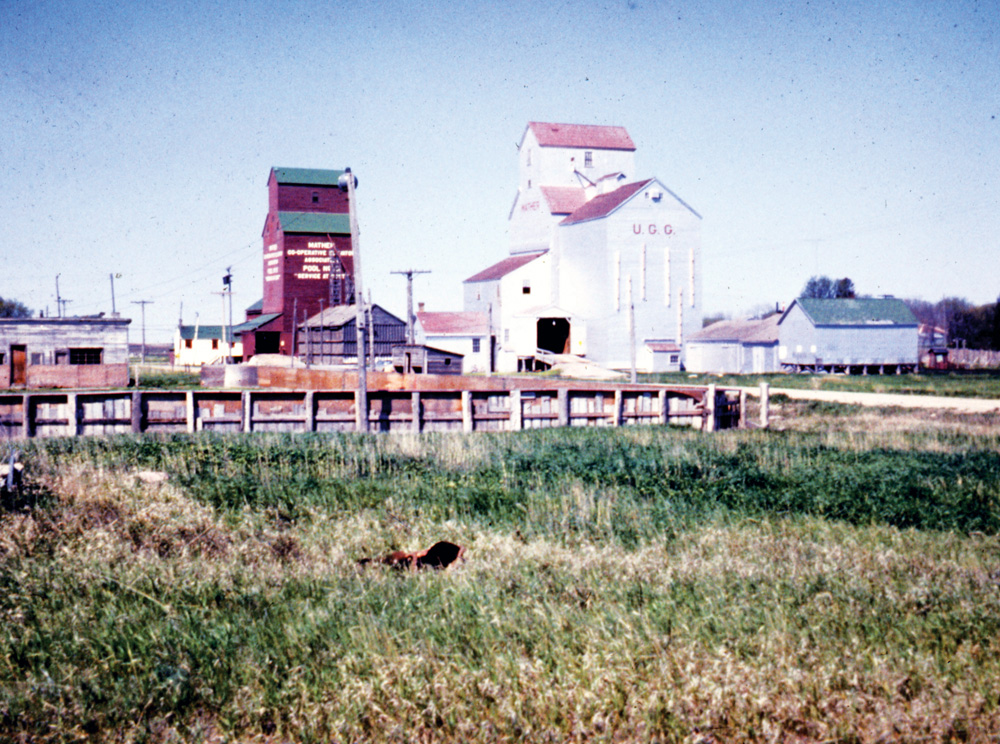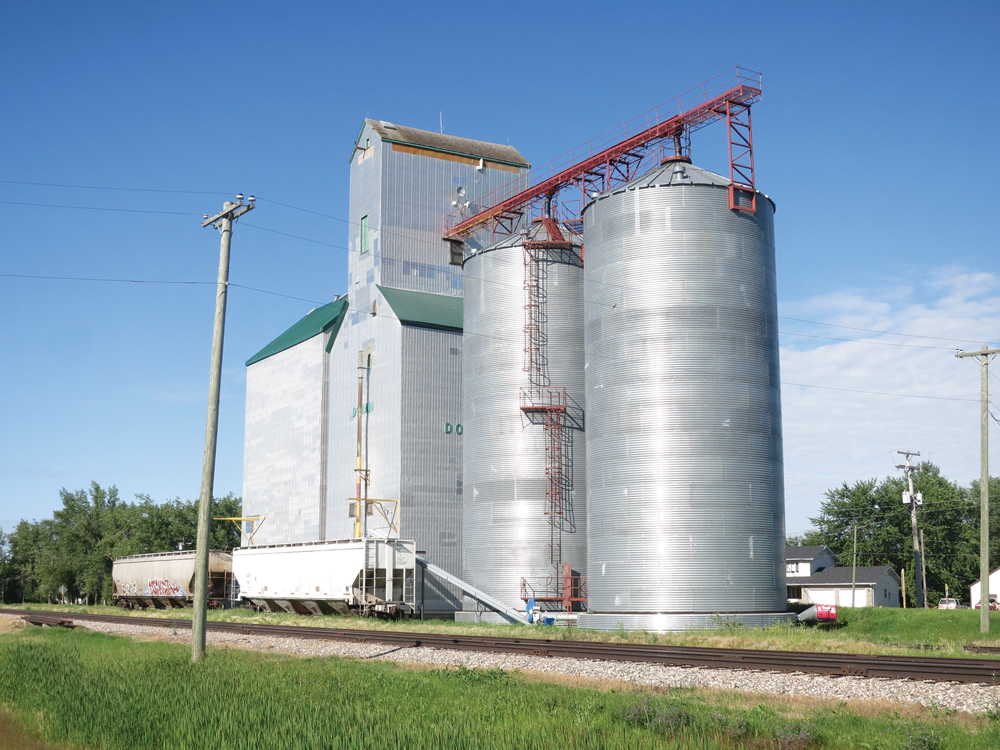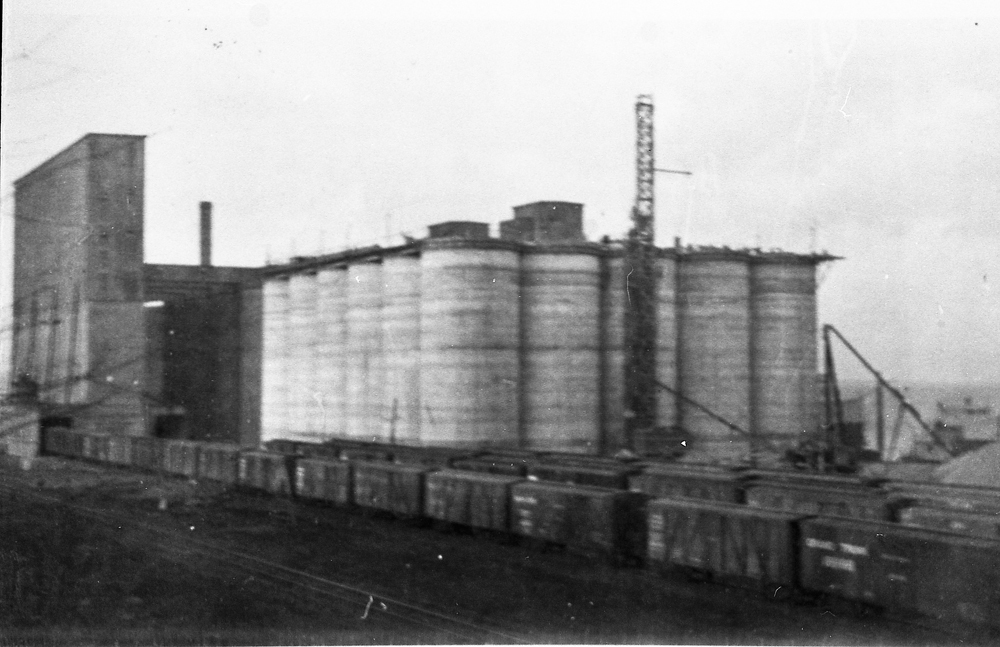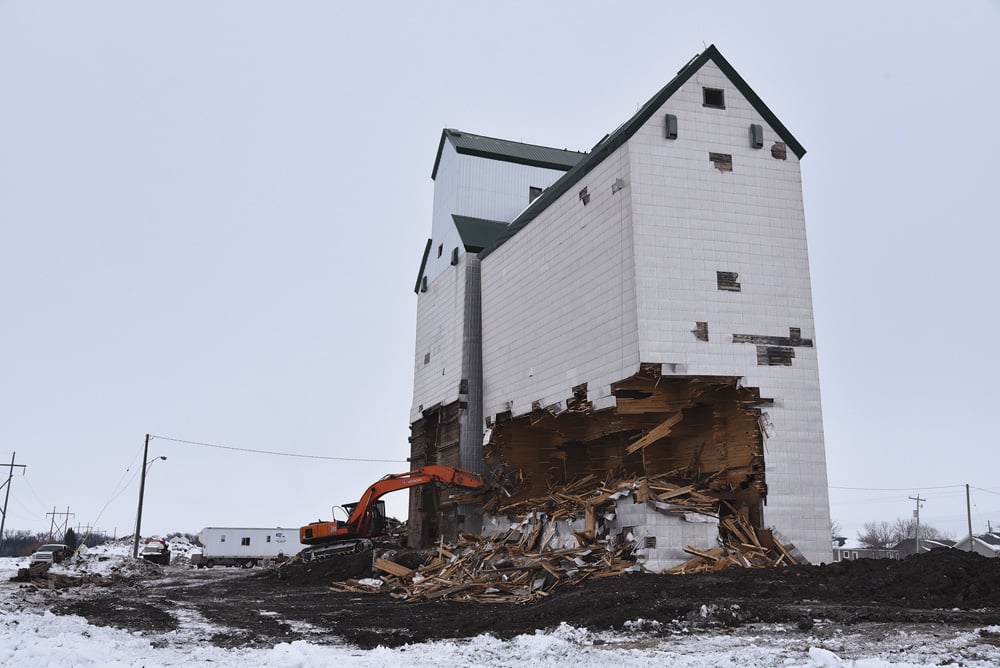
In July 1972, a Manitoba Pool elevator at Rounthwaite, on the CNR Wawanesa Subdivision in what is now the Municipality of Oakland-Wawanesa, was destroyed by fire. It had been purchased from Federal Grain shortly before the fire and was to have been repainted in the new corporate colours a few days later. A new elevator was constructed between 1974 and 1975 and designated as Pool B, joining a Pool elevator dating back to 1928, seen in this photo from October 1978. When the railway line was abandoned in December 1983, the old elevator was demolished and the new one was moved to Nesbitt. It operated there until it was sold into private ownership. The railway line at Nesbitt was removed in mid-2016.
Photo: Lawrence Stuckey Collection, S. J. McKee Archives, Brandon University
A 40,000-bushel wooden grain elevator at Elma was built in 1950 by the Canadian Consolidated Grain Company. Sold to United Grain Growers in April 1959, along with the rest of the company’s elevators, low grain-handling volume and increasing costs caused it to be closed in March 1964. The building was moved to Whitemouth and converted into an annex for an existing elevator there until the facility was closed in July 1979 and removed.
Photo: University of Manitoba Archives & Special Collections
A 40,000-bushel wooden grain elevator at Morris was built by Paterson Grain around 1940. A crib annex was built beside it in 1952, and three steel tanks were added later. After a large terminal elevator was built on the south side of town, use of the facility diminished and it was finally demolished in April 2017.
Photo: Gordon Goldsborough
Around 1903, Western Canada Flour Mills built a 25,000-bushel elevator at Neelin, on the newly built CNR Wakopa Subdivision through the Rural Municipality of Argyle. In 1928, it was joined by a 30,000-bushel elevator constructed by United Grain Growers. By the time of this 1964 photo, the Western Canada elevator had been sold to Manitoba Pool, in 1940, and had been converted into an annex for a new elevator built in 1956. The mid-1950s also saw the addition of a 51,000-bushel crib annex beside the UGG elevator. Elevator and annex were traded to Manitoba Pool in 1973. Closed by December 1978, when the railway line was abandoned, the elevators have been removed from the site.
Photo: UGG Fonds, University of Manitoba Archives & Special Collections
In the 1950s, there were over 700 grain elevators in Manitoba. Today, there are fewer than 200. You can help to preserve the legacy of these disappearing “Prairie sentinels.”
The Manitoba Historical Society (MHS) is gathering information about all elevators that ever stood in Manitoba, regardless of their present status. Collaborating with the Manitoba Co-operator it is supplying these images of a grain elevators in hopes readers will be able to tell the society more about it, or any other elevator they know of.
MHS Gordon Goldsborough webmaster and Journal editor has developed a website to post your replies to a series of questions about elevators. The MHS is interested in all grain elevators that have served the farm community.
Read Also

Grain seller beware
Canadian farmers selling grain need to be vigilant while doing business in an unstable financial climate.
Your contributions will help gather historical information such as present status of elevators, names of companies, owners and agents, rail lines, year elevators were built — and dates when they were torn down (if applicable).
There is room on the website to post personal recollections and stories related to grain elevators. The MHS presently also has only a partial list of all elevators that have been demolished. You can help by updating that list if you know of one not included on that list.
Your contributions are greatly appreciated and will help the MHS develop a comprehensive, searchable database to preserve the farm community’s collective knowledge of what was once a vast network of grain elevators across Manitoba.
Please contribute to This Old Grain Elevator website here.
You will receive a response, by email or phone call, confirming that your submission was received.
Goldsborough is especially interested in determining when elevators were demolished. Readers with photos of elevator demolitions and dates of when these occurred can contact him directly at [email protected] or call 204-782-8829.





